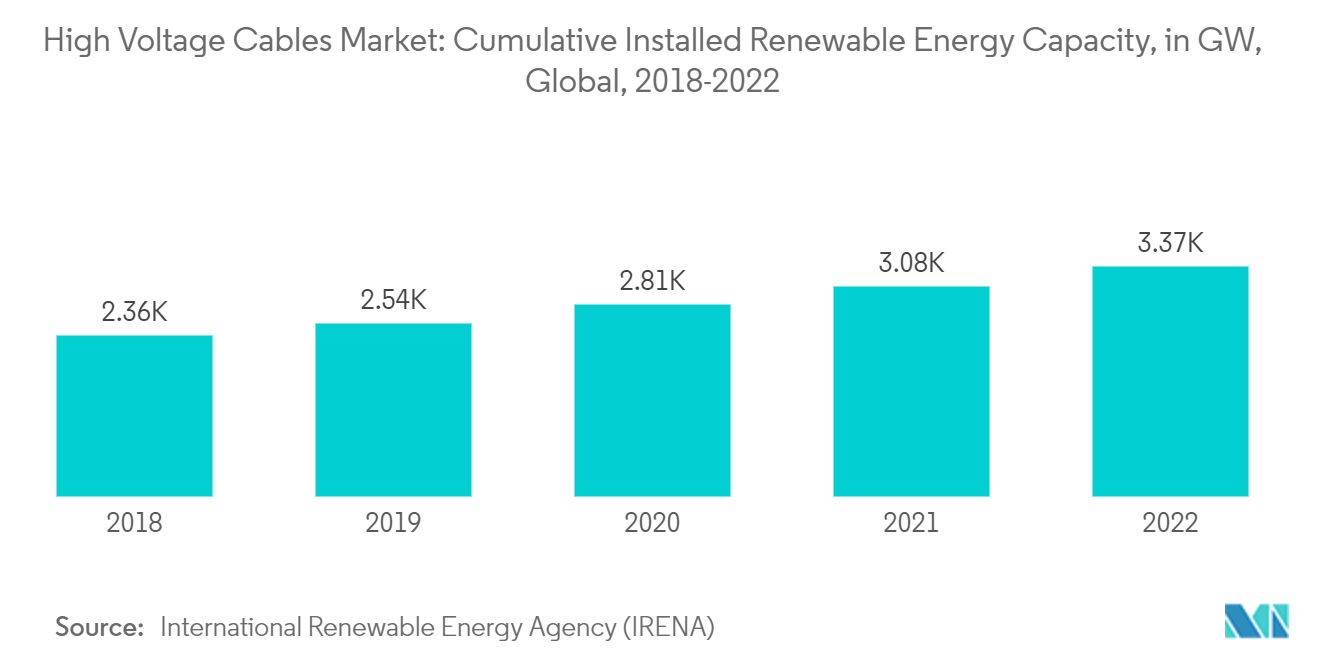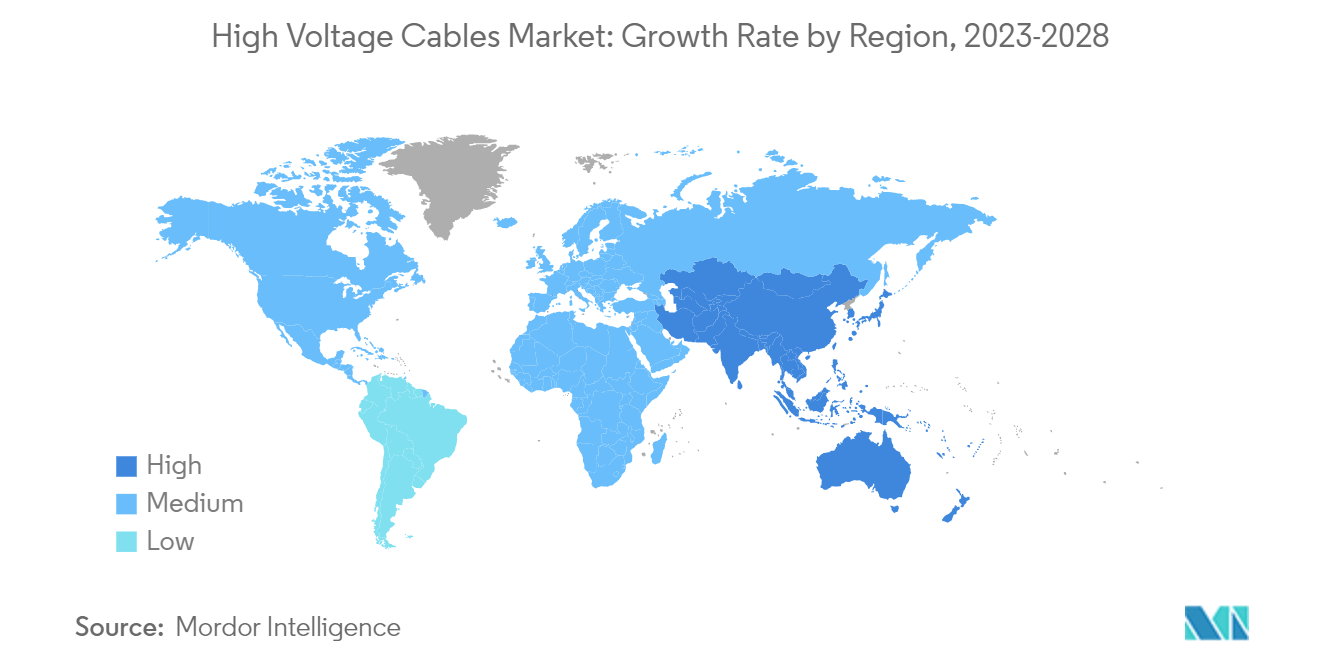Market Trends of High Voltage Cables Industry
HVDC Transmission Segment to Witness Significant Growth
- HVDC cables play an important role in a growing number of HVDC links. While the fixed costs of terminals at both ends of HVDC links are more expensive than AC, the cost per unit length of the line itself is lower. With all the other things being equal, the longer the distance of the link, the lower the relative cost of the link per unit of energy.
- Over a break-even distance (approximately 600-800 km for current technologies), HVDC becomes the lowest-cost option. There are also no technical limits to the potential length of an HVDC cable.
- In 2022, as per the International Renewable Energy Agency (IRENA), global installed renewable energy capacity reached around 3.37 terawatts in total, up by almost 10% from the previous year. Renewable energy has experienced an eruption over recent decades due to decreasing prices in renewable technology as well as apprehensions about the environmental impact of more traditional sources.
- HDVC cable transmissions offer many technical advantages, such as lower losses, improved system stability, and enhanced reliability. Cable links longer than approximately 80 km usually require HVDC transmission. This is due to the fact that for underground or submarine cables, hardly any electricity is delivered when AC lines are 80 km or longer (the cable capacities absorb the usable electricity; hence, DC cables are a beneficial alternative).
- HVDC cable systems are the most viable solution for the transfer of power between asynchronous networks that cross large water bodies, require longer transmission lines, and usually come in a hybrid configuration. These systems provide controllable bulk power transmission capacity without an increase in short-circuit current levels.
- Therefore, the development of HVDC transmission projects is expected to witness significant demand for high-voltage cables during the forecast period.

Asia-Pacific to Dominate the Market
- The burgeoning dominance of the Asia-Pacific region in the high-voltage cables market emerges as a culmination of multifaceted market dynamics and strategic imperatives. Strategic imperatives routed in regional energy consumption patterns substantiate the anticipated dominance. Rapid urbanization, industrial expansion, and growing electricity demand within the Asia-Pacific economies collectively amplify the need for high-voltage cables.
- Asia Pacific’s burgeoning economies necessitate robust energy infrastructure, including efficient high-voltage cable networks to meet escalating power transmission requirements. This strategic fit addresses energy access disparities and catalyzes the region's role as a global energy powerhouse.
- Furthermore, regulatory support and market incentives fortify the region’s leadership position. Government initiatives advocating for renewable energy integration and emissions reduction coupled with favorable policy frameworks and financial incentives catalyzed the adoption of high-voltage cables.
- For instance, India has set up an ambitious target of installing nearly 500 GW of renewable capacity by 2030, a large share of which is expected to come from solar energy. This has propelled the growth of the country’s solar sector, which falling costs and supportive government incentives have buoyed.
- Furthermore, the region’s commitment to interconnected energy grids amplifies the significance of high voltage cables cross border energy trading, and grid interconnection facilitates resource optimization and energy security across diverse nations such as Singapore, Malaysia, Thailand, Vietnam, and Indonesia. The inherently versatile nature of high-voltage cables dovetails with the geographical diversity and economic independence of the Asia-Pacific region, fortifying the rationale for their dominance.
- Therefore, the increasing demand for energy coupled with the integration of renewable energy sources and cross-border electricity transfers is expected to elevate the demand for high-voltage cables during the forecast period.


